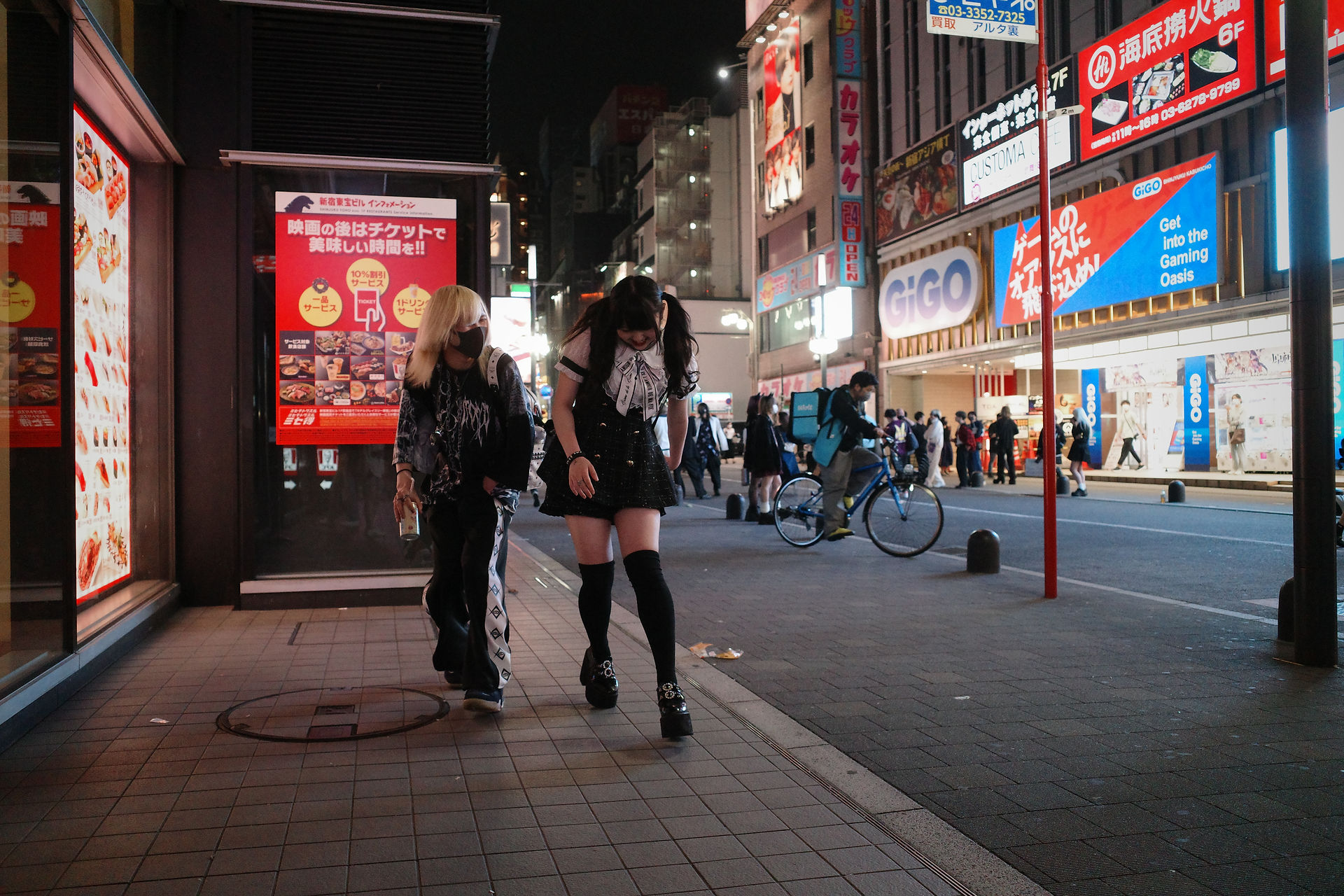
Security of Toyoko Kids
Creating a protective community
by Norika

Photo taken June 9th, 2022

Introduction
Toyoko kids have created an urban youth subculture, which is created upon youth that spend time in Kabukicho, a well-known red light district. According to Cahill, “...The very presence of groups of preadolescents or adolescents in a public place is apparently considered a potential threat to public order [...] While adults treat younger children in public places as innocent, endearing yet sometimes exasperating incompetents, they treat older children as unengaging and frightfully undisciplined rogues. Among other things, the very violation of public etiquette that adults often find amusing when committed by younger children are treated as dangerous moral findings when the transgressor is a few years older” (Travlou, 2003). Simply the presence of older children in an urban area has connotations of violating public etiquette, or seen as dangerous. They are seen as a threat, or causing harm to the rest of the community. The hiroba in Kabukicho is no exception, and Toyoko kids are often marginalized or seen in a negative way by other members of the Kabukicho community. From such marginalization, it has made it difficult to gain protection from adults in the community, who are there to support them. In order to keep themselves safe and protected, Toyoko kids have built a community, where they rely on each other for protection from any harm they may face, spending time in Kabukicho.
Photo taken July 2nd, 2022
For more information on how Toyoko kids are viewed by others, click here!
Ways Toyoko kids protect themselves
Face their backs towards outsiders:
Toyoko kids form groups/clusters, to show their sense of being in a group (telling observers anyone outside of the cluster is not part of their group). This creates a protective, private care for Toyoko kids, protecting them from the outside community.
Wear similar clothing
Many of the Toyoko kids were seen wearing jirai-kei clothing. Through fashion style alone, they create a community that is hard for others to join or disturb. Clothing is a way of differentiating themselves from other communities around them, protecting themselves from outsiders who may cause harm.
Litter Trash:
More often than not, people avoid areas that are dirty, or unpleasant. Toyoko kids litter their trash in the hiroba, making outsiders less inclined to enter their “claimed” territory. Through this action of littering, Toyoko kids are able to protect themselves, and drive outsiders away from their space.
Stay in groups:
There were little to no instances where Toyoko kids were standing alone. If there was an individual alone, they would often approach be approached by other Toyoko kids asking if they wanted to join them (usually to drink/smoke) as a way to include them in their community. They protect each other from outsiders, and create groups to make protecting each other easier.
System of Protection
Although Toyoko kids are made up of a group of adolescence, the difference in age has created a system of older Toyoko kids protecting younger Toyoko kids. In one instance, two men (roughly in their 30s) were pacing the hiroba, scanning the area and looking at the female Toyoko kids. They approached a girl who was slightly separated from the rest of the group and asked if she wanted to leave with them, trying to bribe her by saying he would pay her 10,000 yen. Immediately after the other Toyoko kids noticed, they opened their circle to include her, making it difficult for the men to talk to her alone.


Photo taken June 23rd, 2022
In another instance, an older male (in his 50s) approached a young girl Toyoko kid, initially not saying anything and simply watching from a very close distance. After watching her, he approached and told her he would pay her money if she left with him. She initially laughed it off, walking away from him only for him to follow. Quickly after, a much older, male Toyoko kid approached the two, and told the man to leave because she is not interested. He continued to stay persistent until he eventually gave up and left.
Photo Taken June 9th, 2022
Conclusion and Analysis
The unwelcome environment created by the presence of security guards have changed the way Toyoko kids cope with the dangers they face in the community. Without being able to rely on adults to protect them, they have turned to their own community, and the members within it for protection. Toyoko kids are built by mostly young kids who have left the comfort of their homes or community at school due to varying reasons, and for this reason, the independence in their behavior can be observed. Instead of relying on others for protection, they turn to themselves for the protection and sense of community that they long. The presence of the Toyoko kids themselves is causing no harm to the community of Kabukicho. However, as Cahill stated, simply their presence as adolescents in a public place is seen as a threat to the community. From this stems the marginalization and judgment from outside communities, ostracizing them from the greater community. Toyoko kids have reacted to this by displaying a don’t care attitude, continuing with their normal activities. However, through close observation it becomes evident that these actions (such as littering, staying in groups, wearing similar clothing and facing their backs towards outsiders) is a way to protect themselves from the greater community that is not accepting of them.
Sections
Use of Language
